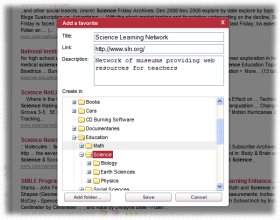|
Education
Web
Viewing 1-2 of 2 total results
to the study of geography. The characteristics, distribution, and complexity of human cultures create a cultural mosaic. 7 – G4.1.1 Identify and explain examples of cultural diffusion within the Eastern Hemisphere (e.g., the spread of sports, music, architecture, te...
1
0
to the study of geography. The characteristics, distribution, and complexity of human cultures create a cultural mosaic. 7 – G4.1.1 Identify and explain examples of cultural diffusion within the Eastern Hemisphere (e.g., the spread of sports, music, architecture, television, Internet, Bantu languages in Africa, Islam in Western Europe). 7 – G4.1.2 Compare roles of women in traditional African societies in the past with roles of women as modern micro-entrepreneurs in current economies. G4.2 Technology
52
0
http://www.michigan.gov/documents/mde/SSGLCE_218368_7.pdf#page=52
www.michigan.gov/documents/mde/SSGLCE_218368_7.pdf#page=52
Americas (e.g., baseball, soccer, music, architecture, television, languages, health care, Internet, consumer brands, currency, restaurants, international migration). G4.2 Technology Patterns and <span class="highlight">Networks</span> Describe how technology creates patterns and <span class="highlight">networks</span> that connect people, products, and ideas. 6 – G4.2.1 List and describe the advantages and disadvantages <span class="highlight">of</span> different technologies used to move people, products, and ideas throughout the world (e.g., call centers <span class="highlight">in</span> the Eastern Hemisphere that service
58
0
http://www.michigan.gov/documents/mde/SSGLCE_218368_7.pdf#page=58
www.michigan.gov/documents/mde/SSGLCE_218368_7.pdf#page=58
24;8 GRADES K-8 SOCIAL STUDIES CONTENT EXPECTATIONS V. 12/07 MICHIGAN DEPARTMENT <span class="highlight">OF</span> EDUCATION HISTORy H1 The World <span class="highlight">in</span> Temporal Terms: Historical Habits <span class="highlight">of</span> Mind (Foundational Expectations Addressed <span class="highlight">in</span> Grade 6) 1.1 Temporal Thinking 1.2 Historical Inquiry and Analysis 1.4 Historical Understanding W1 WHG Era 1 – The Beginnings <span class="highlight">of</span> Human Society 1.1 Peopling <span class="highlight">of</span> the Earth 1.2 Agricultural Revolution W2 WHG Era 2 – Early Civilizations and Cultures and the Emergence <span class="highlight">of</span> Pastoral
62
0
http://www.michigan.gov/documents/mde/SSGLCE_218368_7.pdf#page=62
www.michigan.gov/documents/mde/SSGLCE_218368_7.pdf#page=62
Central Asian civilizations <span class="highlight">in</span> the areas <span class="highlight">of</span> art, architecture and culture; science, technology and mathematics; political life and ideas; philosophy and ethical beliefs; and military strategy. 7 – W3.1.6 Use historic and modern maps to locate and describe trade <span class="highlight">networks</span> among empires <span class="highlight">in</span> the classical era. 7 – W3.1.7 Use a case study to describe how trade integrated cultures and influenced the economy within empires (e.g., Assyrian and Persian trade <span class="highlight">networks</span> or <span class="highlight">networks</span> <span class="highlight">of</span> Egypt and Nubia/Kush; or
65
0
http://www.michigan.gov/documents/mde/SSGLCE_218368_7.pdf#page=65
www.michigan.gov/documents/mde/SSGLCE_218368_7.pdf#page=65
to the study <span class="highlight">of</span> geography. The characteristics, distribution, and complexity <span class="highlight">of</span> human cultures create a cultural mosaic. 7 – G4.1.1 Identify and explain examples <span class="highlight">of</span> cultural diffusion within the Eastern Hemisphere (e.g., the spread <span class="highlight">of</span> sports, music, architecture, television, Internet, Bantu languages <span class="highlight">in</span> Africa, Islam <span class="highlight">in</span> Western Europe). 7 – G4.1.2 Compare roles <span class="highlight">of</span> women <span class="highlight">in</span> traditional African societies <span class="highlight">in</span> the past with roles <span class="highlight">of</span> women as modern micro-entrepreneurs <span class="highlight">in</span> <span class="highlight">current</span> economies. G4.2 Technology
HIGH SCHOOL SOCIAL STUDIES CONTENT EXPECTATIONS V 10/07 MICHIGAN DEPARTMENT OF EDUCATION 19 GENERAL SOCIAL SCIENCE KNOWLEDGE, PROCESSES, AND SKILLS (listed on page 20) K1 General Knowledge P1 Reading and Communication P2 Inquiry, Research, and Analysis P3 Public Discourse and Decision Maki...
1
0
HIGH SCHOOL SOCIAL STUDIES CONTENT EXPECTATIONS V 10/07 MICHIGAN DEPARTMENT OF EDUCATION 19 GENERAL SOCIAL SCIENCE KNOWLEDGE, PROCESSES, AND SKILLS (listed on page 20) K1 General Knowledge P1 Reading and Communication P2 Inquiry, Research, and Analysis P3 Public Discourse and Decision Making P4 Citizen Involvement WORLD HISTORY AND GEOGRAPHY Eras 4 – 8 Addressed in WHG HSCE Foundations in WHG Eras 1 – 3 (Review of content taught in Grades 6 and 7) F1 World
19
0
http://www.michigan.gov/documents/mde/SS_HSCE_210739_7.pdf#page=19
www.michigan.gov/documents/mde/SS_HSCE_210739_7.pdf#page=19
HIGH SCHOOL SOCIAL STUDIES CONTENT EXPECTATIONS V 10/07 MICHIGAN DEPARTMENT <span class="highlight">OF</span> EDUCATION 19 GENERAL SOCIAL SCIENCE KNOWLEDGE, PROCESSES, AND SKILLS (listed on page 20) K1 General Knowledge P1 Reading and Communication P2 Inquiry, Research, and Analysis P3 Public Discourse and Decision Making P4 Citizen Involvement WORLD HISTORY AND GEOGRAPHY Eras 4 – 8 Addressed <span class="highlight">in</span> WHG HSCE Foundations <span class="highlight">in</span> WHG Eras 1 – 3 (<span class="highlight">Review</span> <span class="highlight">of</span> content taught <span class="highlight">in</span> Grades 6 and 7) F1 World
46
0
http://www.michigan.gov/documents/mde/SS_HSCE_210739_7.pdf#page=46
www.michigan.gov/documents/mde/SS_HSCE_210739_7.pdf#page=46
post-Cold War world, including advantages, disadvantages, and new challenges (e.g., military missions <span class="highlight">in</span> Lebanon, Somalia, Haiti, Bosnia, Kosovo, and the Gulf War). (National Geography Standard 13, p. 210) 9.2.2 9/11 and Responses to Terrorism – Analyze how the <span class="highlight">attacks</span> on 9/11 and the response to terrorism have altered American domestic and international policies (including e.g., the Offi ce <span class="highlight">of</span> Homeland Security, Patriot Act, wars <span class="highlight">in</span> Afghanistan and Iraq, role <span class="highlight">of</span> the United States <span class="highlight">in</span> the United Nations
56
0
http://www.michigan.gov/documents/mde/SS_HSCE_210739_7.pdf#page=56
www.michigan.gov/documents/mde/SS_HSCE_210739_7.pdf#page=56
the role <span class="highlight">of</span> law <span class="highlight">in</span> the American political system? What is the importance <span class="highlight">of</span> law <span class="highlight">in</span> the American political system? 3.4.1 Explain why the rule <span class="highlight">of</span> law has a central place <span class="highlight">in</span> American society (e.g., Supreme Court cases like Marbury v. Madison and U.S. v. Nixon; practices such as submitting bills to legal counsel to ensure congressional compliance with the law). (See USHG F1.1, 8.2.4) 3.4.2 Describe what can happen <span class="highlight">in</span> the absence or breakdown <span class="highlight">of</span> the rule <span class="highlight">of</span> law (e.g., Ku Klux Klan <span class="highlight">attacks</span>, police corruption
|
